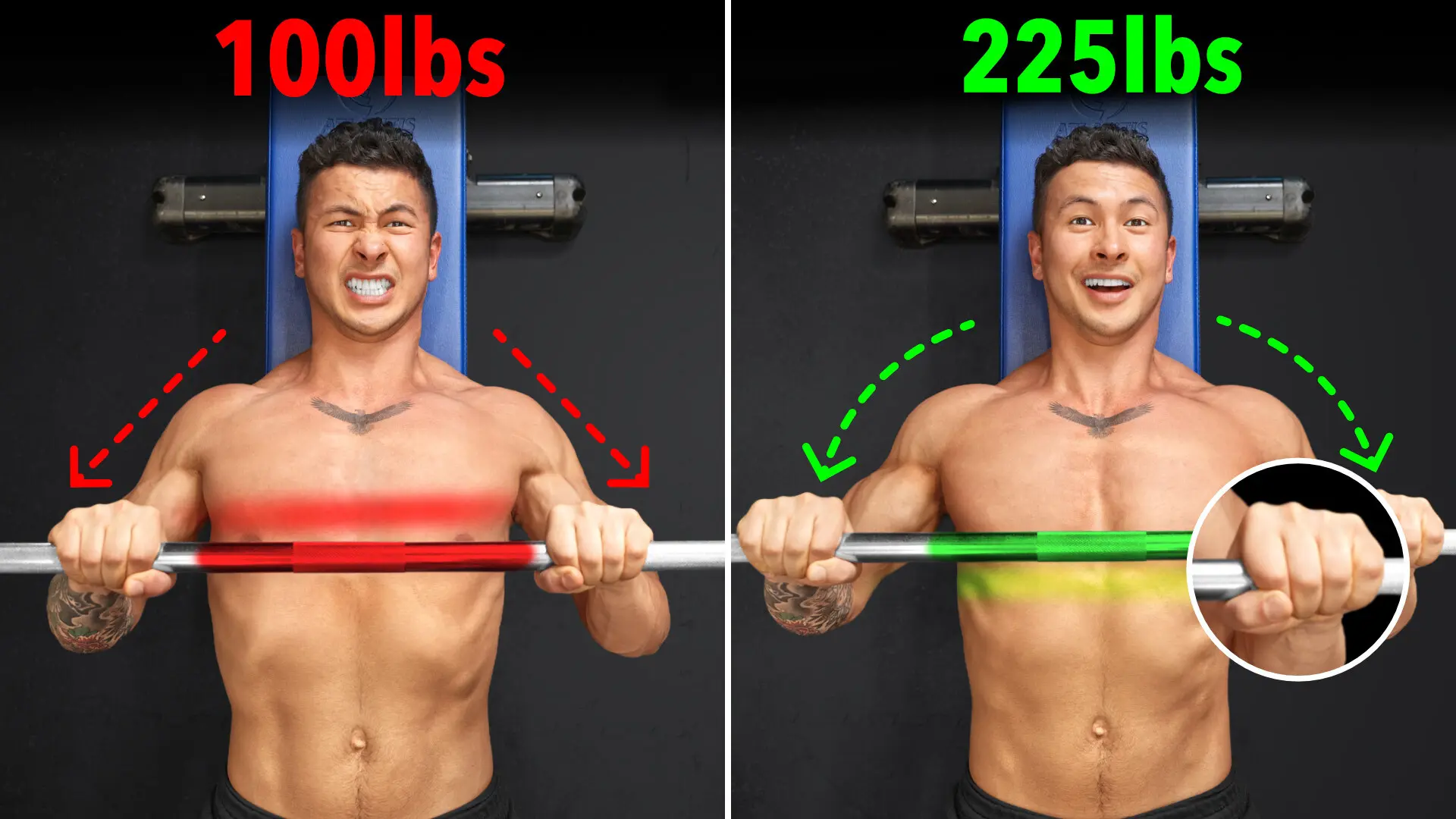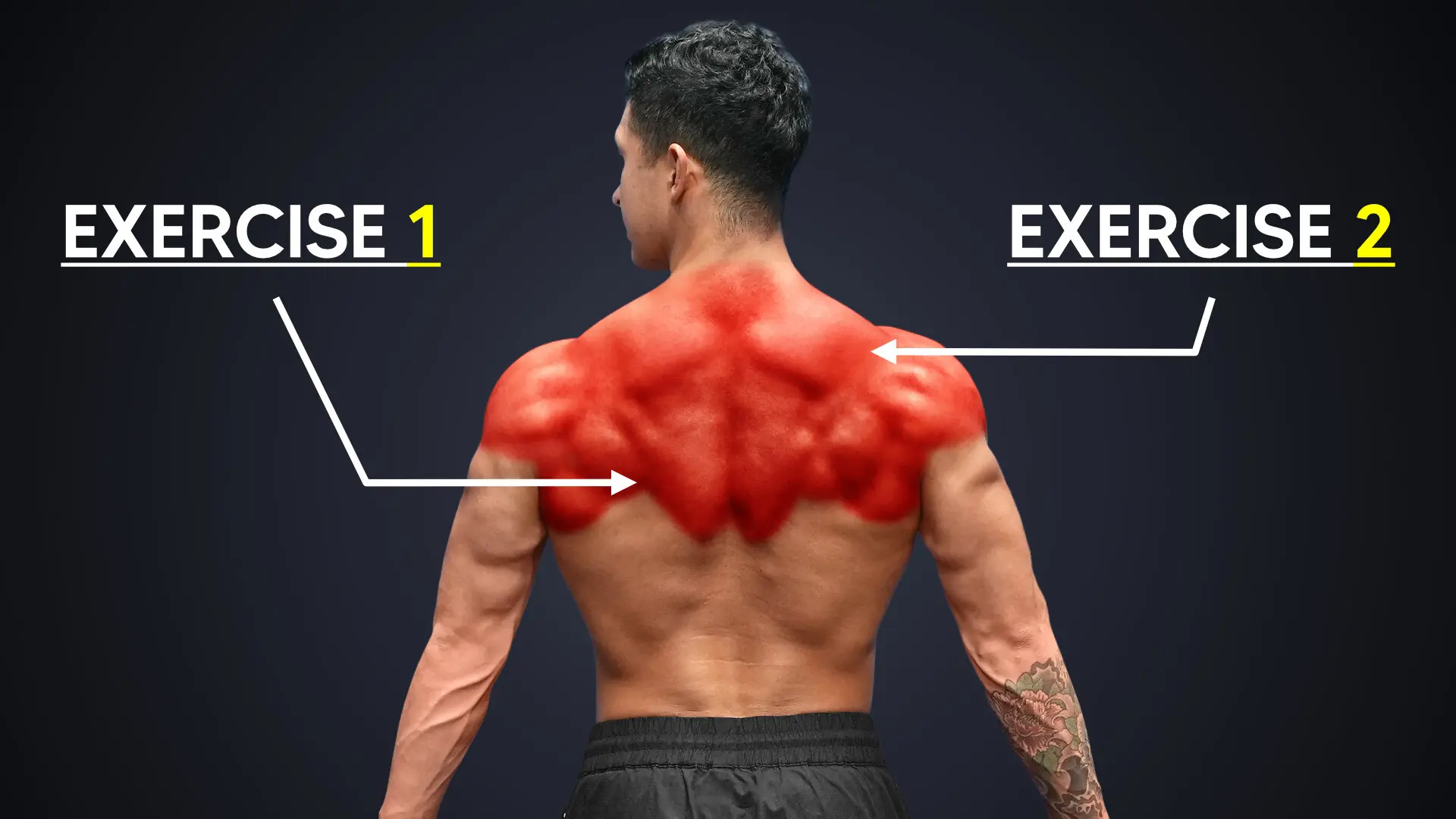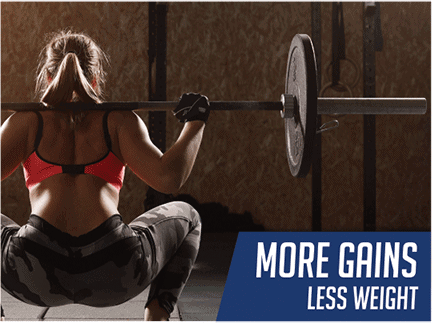
How To Lift Weights To Build Muscle Faster (LIFT LIKE THIS!)
Want to build muscle as fast as possible? Read this article. Here, I cover how (exactly) you should lift to build muscle faster so you achieve your dream physique in less time.
One of the biggest areas of confusion for lifters is how exactly should you execute the reps of your exercises to elicit the most muscle growth (i.e. build muscle faster).
I mean let’s just take a look at a standard biceps curl, for example. There are a few options:
- Higher reps with lighter weight and a slower tempo
- Lower reps but with heavier weight and a faster tempo
- Do a set of 21’s. This is where you perform 7 reps at the bottom range of motion, 7 reps at the top range of motion, and then finish off with 7 full range of motion reps. Or, you could transition over to the squat rack and do your curls there.
So, how do you know which method is best for growth?
Well, as I’ve gone through in some of my past articles (here, here), research shows that we have a lot of flexibility when it comes to the way we should perform our reps for maximal growth. As long as workout volume is equated for, then we can use:
- Lighter weights for higher reps
- Heavier weights for lower reps
- A slightly slower tempo
- A slightly faster tempo
- And so on
Before that: if you're looking for a training program that'll always help you train in the most optimal approach for muscle growth, I've got just the thing for you. Every BWS program is designed to help you transform your physique in the most time-efficient manner. And best of all? It's all rooted in science. For more information on how BWS programs can help you to look better - FAST:
Click the button below to take my analysis quiz to discover the best program for you:
↓
How To Build Muscle Faster: General Guidelines
Of course, research has undoubtedly shown that we do have quite a bit of flexibility. Nonetheless, to simplify this for you, it would still be in your best interest to execute your reps in the following fashion to build muscle mass fast, naturally:
- Stick MOSTLY to a rep range of roughly 6-12 reps for each of your sets - This rep range is the most effective way to accumulate volume for growth without also accumulating excessive fatigue on your joints and nervous system.
- Use a moderately heavy weight or resistance - This is so you can stay within that 6-12 rep range for most of your sets. So, not too heavy of a weight so that you can only do a few reps with it. But also not too light of a weight where you can easily do well over 12 reps with it.
- Be mindful of your lifting tempo - Use a lifting tempo that is around 1 second on the way up and 1 second on the way down of each rep.
These 3 “rules” are, for the most part, how you’d want to perform your reps on any exercise. This will help you build muscle faster. In other words, stimulate growth in the most effective manner.
Many Lifters Make The Mistake Of Overlooking Tension
That said, there is another major area where most people tend to overlook when it comes to their reps. This severely compromises their resulting growth. And is also often the culprit behind “lagging” body parts.
And this has to do with tension. Because if you want to put on muscle fast, then maximizing tension and stimulating as many muscle fibers as possible within your target muscle during every single one of your reps needs to be your priority. As this is imperative to maximizing growth long term regardless of the:
- Rep range
- Exercise
- Tempo OR
- Weight
...That you choose to use for your reps.
But going beyond the guidelines I provided, how exactly do we go about further maximizing tension in each of our reps? What is the most effective way to build muscle? Well, there are 2 steps to this that you’ll want to start applying right away.
Step 1: Mastering Execution
When it comes to how to build muscle faster, the first step you need to implement is mastering and perfecting the execution of every single rep of all the exercises that you do. Because your body is designed to cheat. Meaning that it’s always going to try to find the easiest way out during your reps.
Let's take curls, for example. When someone decides to start adding more weight or do more reps, they’ll tend to compensate by using a little more momentum. Or sway their elbow a little more. Which then shifts tension away from the biceps. And onto other muscle groups, like the lower back and front delts instead.
This can also be observed in push-ups. As soon as fatigue sets in, people tend to start shortening the range of motion and sagging the lower back. Because doing so makes the reps easier. So yes, in these two cases you may be lifting heavier or doing more reps than you typically would. But you’re not actually providing more tension to your target muscle. And hence won’t experience the growth you’d expect in that muscle because of a breakdown in execution.
Be Mindful Of Your Exercise Execution For Every Single Rep
So, take a look at your exercises. Especially the exercises for your more “stubborn” muscle groups. See if you’ve been compromising your form during your reps in order to lift more weight or do more reps. Most of you will likely find that you’re guilty! And that's even if it’s very subtle.
If so, lighten the weight or decrease the reps. This is so you can execute your sets to the point where every single one of your reps is identical. And are all executed with precision and optimal form. This way, you’re actually using the muscles you intend to grow with that exercise. And also best setting yourself up for success with step 2, which has to do with applying internal focus.
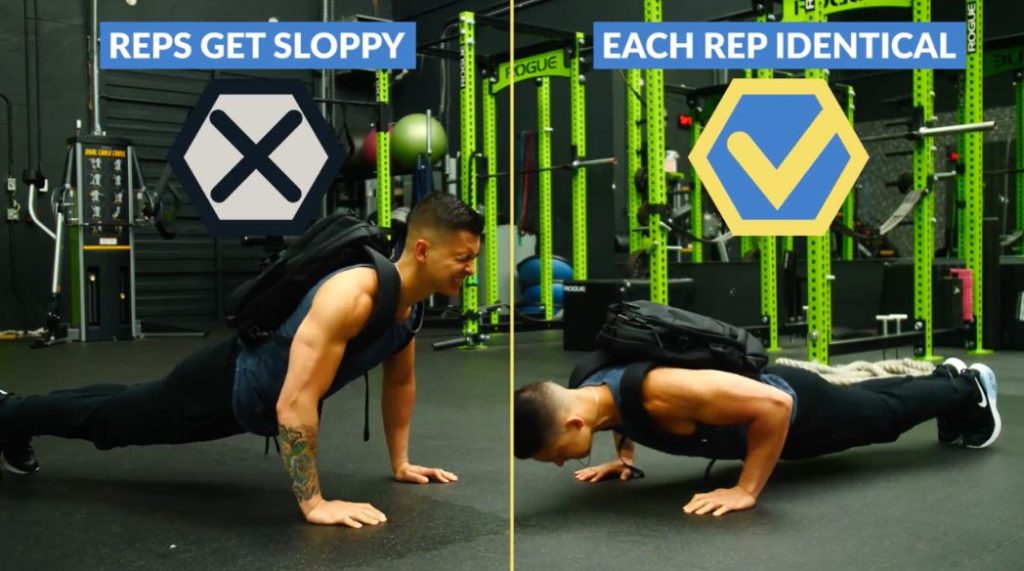
Step 2: Applying Internal Focus
Internal focus is the idea that we can stimulate and grow our target muscles to an even greater degree by shifting more of our focus to them working during each rep.
Studies Show That You Can Build Muscle Faster With Internal Focus
This theory was first tested back in 2009. A team of US researchers rounded up a group of subjects to do lat pulldowns. And measured the resulting muscle activation in the lats. They wanted to find out if it was possible to make their lats work harder by simply shifting their focus during their reps. They randomly assigned participants to two groups:
- Group 1 - They used an externally focused cue that simply instructed them to “pull the weight down”.
- Group 2 - They instead used an internally focused cue. They instructed the subjects to “pull with their back instead of their arms and focus on the tension in your lats”.
The result? The researchers found that muscle activity in the lats was boosted by nearly 20 percent with the internal cue.
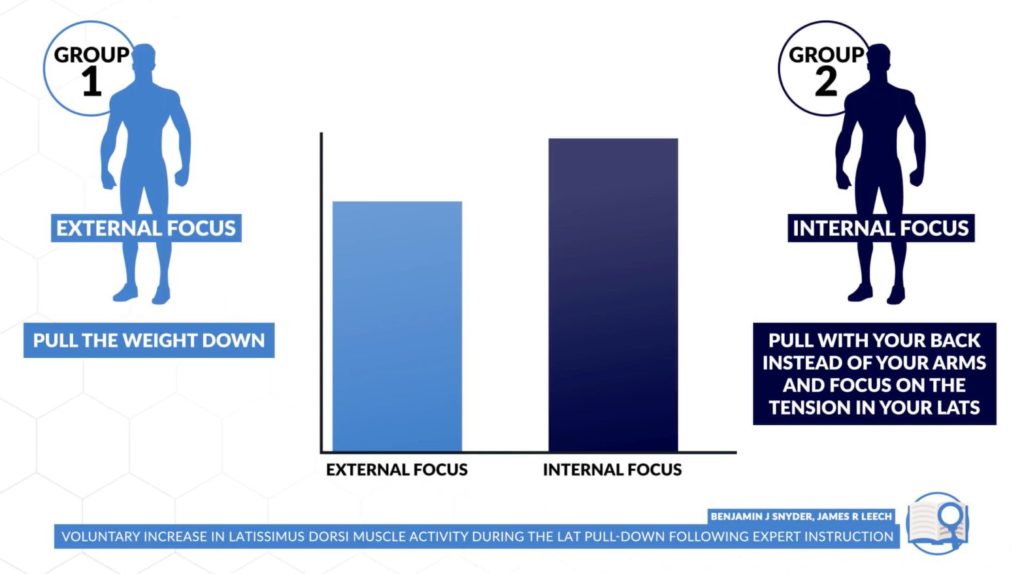
Other studies have reported similar results as well. Even in different muscle groups! With one study showing more than double the glutes activation during prone hip extension in subjects who were given the simple internal cue for them to “use their glutes to lift their legs while keeping their hamstrings relaxed” (9.7 vs 21.6% activation).
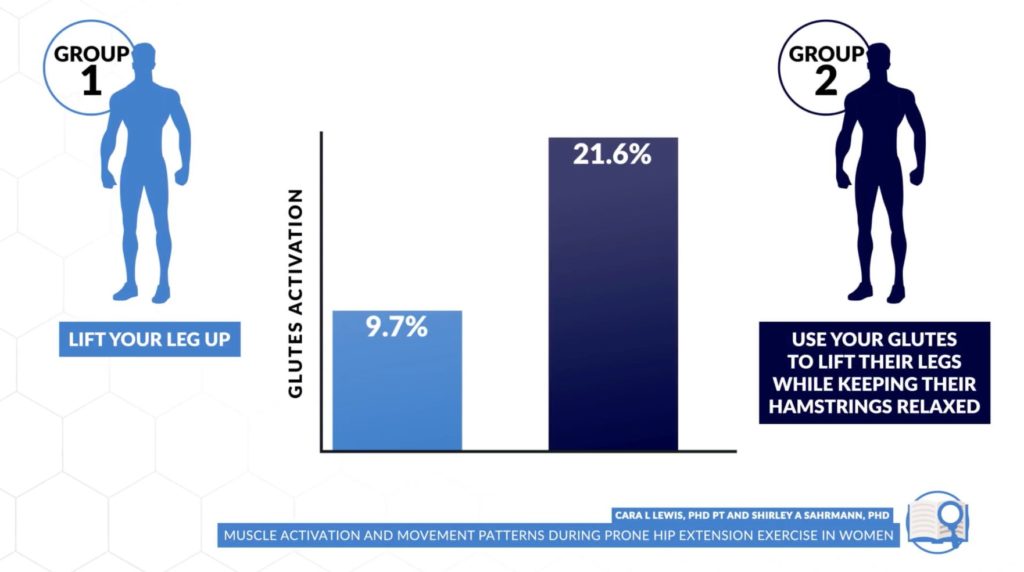
Interestingly, this simple shift in focus does not only boost muscle activation. It also seems to make the target muscle grow faster than normal as a result! With a recently published 2018 study comparing between subjects who were instructed to:
- “Squeeze the biceps” as they performed each curl OR
- To simply “get the weight up"
...Those who were asked to squeeze their biceps experienced almost double the biceps growth after a period of 8 weeks!
Really enjoy digging into the research behind optimal lifting principles? Then you'll absolutely love working with my team of highly-qualified trainers and nutritionists (plus myself!); in the process of guiding you through the process of achieving your dream physique in the time-efficient way possible, we'll also make sure you understand the science behind it all. Find out more here:
Click the button below to find out more about the 3-on-1 coaching program:
↓
Focus On Contracting Your Target Muscle, Instead Of Just Doing Reps
Meaning that as you perform your reps for any exercise, you need to be mindful. Your main goal should NOT be to simply do your required number of reps and sets for that day. Doing 3 sets of 10 becomes pointless and counterproductive for growth if you’re not actively using your target muscle during each of those reps. And we can do so most effectively by applying this concept of internal focus.
So, what I want you to do is try to shift your thinking during your reps. You need to realize that we don’t just “lift weights” or “do reps”. With each of our exercises, all we are doing is contracting our target muscle. You can do so by bringing its origin and insertion points closer together. Which then moves whatever load or resistance we’re using. And that’s what I want you to try to think about as you perform your reps. That's as opposed to externally focusing on just getting the weight up or doing a certain number of reps.
Experience The Difference With Push-Ups Now
For example, right now get down into a push-up position. We’ll test something out. Do just 5 reps with however you typically perform your push-ups. Now if you’re like most people, you mindlessly went about doing those 5 reps.
Your main goal was just hitting those 5 reps. And, as a result, failed to provide very much tension to your chest.
But now what I want you to do is retry this with another 5 reps. This time, first make of note the origin and insertion points of the chest which is at your sternum and the top of your humerus. Now during your push-ups, focus on simply bringing these two points closer together. This will allow you to fully contract your chest. Which will then, as a byproduct of this, press your body up.
Note that you won’t be able to actually bring these two points together. Regardless, you want to actively focus on this idea. And squeeze that arm in towards the middle of your body as if you could bring them together. As you can see, all we’re doing is bringing those two points closer together and further apart to fully contract and fully stretch the chest.
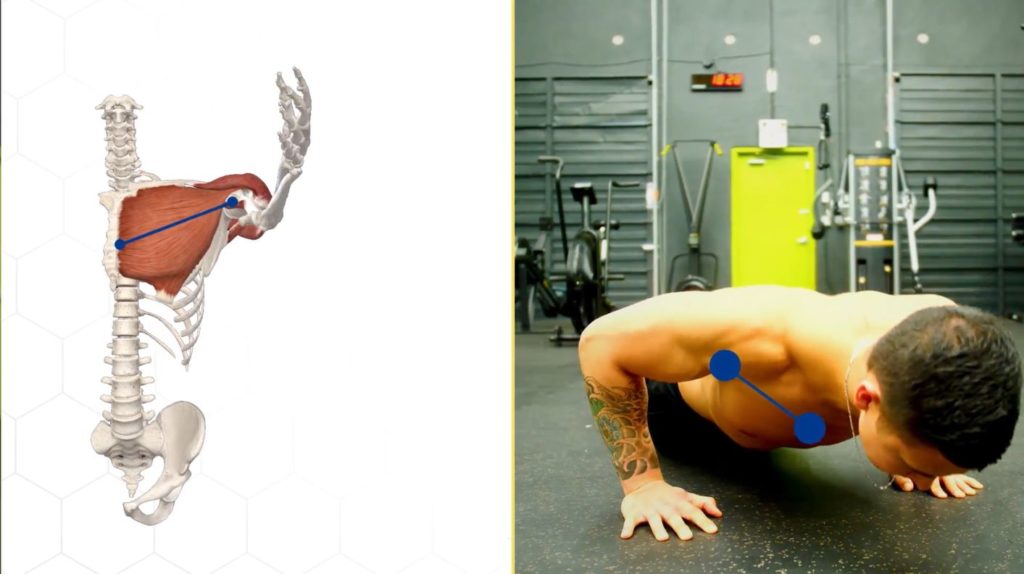
You can even focus on simple internal cues during your reps such as “squeezing your biceps together” or “squeezing your biceps into your armpits”. With that all in mind, retry your push-ups for another 5 reps. What you’ve likely found is a significantly greater contraction and fatigue in your chest from those exact same 5 reps.
We haven’t changed anything aside from your internal focus. Yet, we were able to add considerably more tension to the chest. This will as a result lead to far greater growth when applied to all the reps you do for your chest exercises.
The Same Concept Applies To All Your Exercises
The same idea goes for something as simple as biceps curls. Stop thinking about just lifting the weight up. Instead, note the origin and insertion points of the biceps. And think about bringing those two points closer together to fully contract the biceps as you curl. Thich will then as a result lift the weight up.
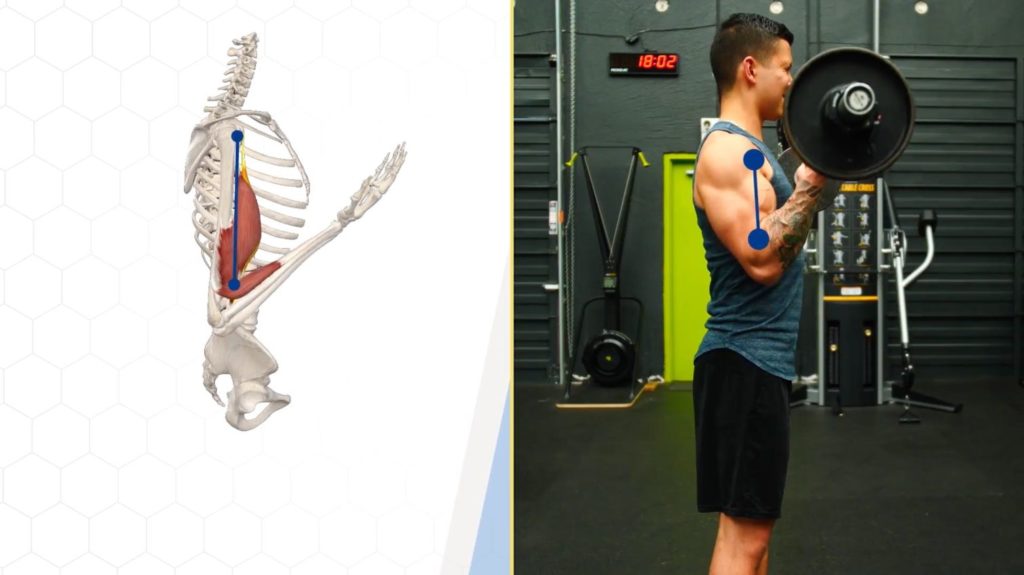
So think less about the action or movement involved. And more about fully contracting the right muscles every single rep. This will result in far greater growth and with less work.
Do note however that applying this will inevitably result in your exercises now becoming considerably more challenging. In fact, research has shown that subjects applying an internal focus to their chest during the bench press did significantly boost chest activation. But it also resulted in fewer reps being performed in their sets (10 vs 9 reps per set on average).
Meaning that for a lot of you, it can be tempting to stop using this internal focus. Especially towards the end of a set purely in order to achieve your target number of reps. Or hit a certain amount of weight for that day. But all this does is it leads to the appearance of progressive overload being achieved. And makes it seem as if your chest did in fact get stronger.
But that wasn’t actually wasn't the case as you instead simply shifted more tension to other muscles to help out. And these extra reps and weight that you do by sacrificing your internal focus just do more harm than good. That's because that extra tension isn’t being directed towards growing your target muscle, which is why you chose that exercise in the first place! So, put the ego aside. Realize that this is the more effective approach for long term growth.
With The Exception Of Heavier Sets Of Lower Reps
There is an exception to this, though. Research has shown that the effectiveness of maintaining an internal focus on your target muscle in an exercise seems to decrease as the weight gets heavier and heavier. More specifically, it seems that you’ll want to apply this when you’re lifting a weight that’s around 75% of your 1 rep max or below. Which is the equivalent to anything above around 8 reps per set. Meaning that for heavier sets of lower reps, and especially for compound lifts like the deadlift, for example, you would want to instead focus your attention on execution and simply getting the weight up.
How To Build Muscle Faster: Takeaway
All in all though guys, you need to realize why you’re doing your exercises. If your aim is to use those exercises to stimulate your muscles to grow them, then you’re going to get far better results in the long run by prioritizing your execution and focusing on the muscles you’re supposed to be working as opposed to just moving weight from point A to point B. Apply this simple concept to each one of your reps and I guarantee that you’ll start to experience far greater growth as a result.
And for an all in one, step by step program that comes complete with both exercise tutorials for each and every exercise, AND follow along guides showing you exactly how to maximally activate each of your muscle for growth so that you can see faster results with less work, then:
Click the button below to take my analysis quiz to discover the best program for you:
↓
I hope you enjoyed this article! Hopefully, you now know how to build muscle faster! Don’t forget to give me a follow and connect with me on Instagram, Facebook, and Youtube as well, in order to stay up to date with my content.


